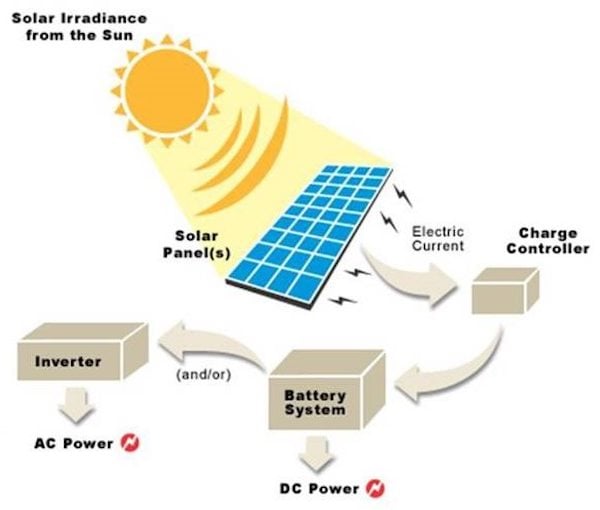

On-demand Solar Energy—Researchers Store and Use Energy from the Sun
source link: https://www.allaboutcircuits.com/news/on-demand-solar-energy-chalmers-university-researchers-store-and-use-energy-from-the-sun/
Go to the source link to view the article. You can view the picture content, updated content and better typesetting reading experience. If the link is broken, please click the button below to view the snapshot at that time.

News
On-demand Solar Energy—Researchers Store and Use Energy from the Sun
13 hours ago by Jake Hertz
One setback to fully utilizing solar energy is how to successfully store it. Aiming to tackle this issue, researchers have successfully converted stored electrical energy into usable electrical power.
As the world looks for more renewable energy resources, one source that is always at the front of everyone's mind is solar. Despite the hopeful outlook of using solar energy, a major hindrance to solar's viability and long-term success as a dominant energy source is our ability to store the energy.
To truly decouple a home from the grid, we need high-capacity batteries to store solar energy during the day to use during the night or in conditions of no sun.

A high-level overview of a solar energy system. Image used courtesy of Green Times
While there's a lot of R&D going into solving this exact issue, one group of researchers from Chalmers University in Sweden is taking a drastically unique approach. Recently, the group published a paper showing that they've used a unique process to successfully store energy from the sun as a liquid and later harness that directly as electrical power.
In this article, we'll look at the research, the potential applications, and the challenges the technology may face in the future.
Chalmer University's M.O.S.T System
The foundation of this group's research is their extremely novel means for storing solar energy, called their Molecular Solar Thermal Energy Storage system (MOST).

Molecular structure and absorption of MOST molecules. Image used courtesy of Wang et al
Originally developed over a decade ago, the MOST system is a particular energy storage system that leverages a unique molecule consisting of carbon, hydrogen, and nitrogen. This chemical structure has the unique property that, when exposed to sunlight, the atoms within the molecule rearrange themselves so that the molecule exists at a higher energy state.
This reshaping could effectively be a form of energy storage, and the researchers claim to have found a way to store the molecules in liquid form such that energy is storable for up to 18 years.
In this way, the MOST system could allow for long-term solar energy storage directly as chemical energy. This method is contrasted with the traditional method of storing solar energy, which consists of using a photovoltaic cell to convert solar to electrical and then storing that energy as chemical energy in a battery.
Teaming Up for Energy Storage
Building on previous research, the researchers behind MOST recently published a new paper showing that they could convert this stored solar energy into usable electrical power successfully.
As described in their paper in Cell Reports Physical Science, the researchers teamed up with another group of researchers at Shanghai Jiao Tong University. This collaboration hoped to combine the MOST system with Shanghai Jiao Tong's newly developed ultrathin micro-electromechanical system (MEMS) thermoelectric generator (TEG) chip.
Overall, the MOST researchers showed that they could use a unique catalyst to incite their storage molecules to release their stored energy as heat and return to their original shape. This heat release was then captured by an array of MEMS-TEGs, with the result being a total electrical output power of 0.1 nW, which equates to 1.3 W/m3.

The researchers connected their MOST system to a MEMS-TEG chip. Image used courtesy of Wang et al
All in all, this experiment was the researcher's first successful generation of electrical power from their MOST system. This power output was successfully sustained for 24 minutes, resulting in total electric energy production of 0.44 Wh/m3.
Overcoming Future Challenges
While this technology is fascinating, there are significant technical challenges to be overcome before it can become mainstream.
According to the researchers, it has been previously estimated that an "ideal" liquid MOST device can store up to 21% of the solar energy later heat production. Combine that with the efficiency of a standard TEG, liberally 10%, which means that only 2.1% of solar energy captured in this setup can currently be produced into electricity.
If these researchers can overcome challenges of inefficiency with the maturation of the technologies, this research has the potential to make a significant impact on the future of renewable energy.
Recommend
About Joyk
Aggregate valuable and interesting links.
Joyk means Joy of geeK